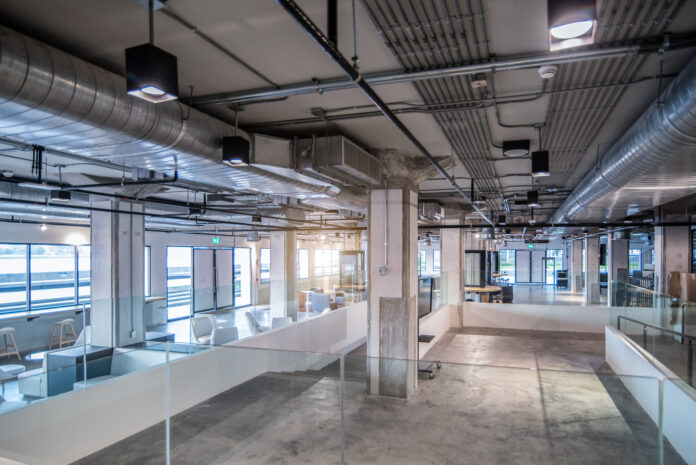Imagine your firm is asked to submit a bid to modernize the MEP systems of a 10-story institutional building. Floors one and two are for public access and feature double-height spaces, curvilinear walls, a tangle of overhead infrastructure and a cramped mechanical room. Floors three to seven host classrooms, research labs and office spaces — each similar in layout but not quite the same. Floors eight to 10 contain multipurpose rooms and event space.
As part of your quote, you need to estimate the cost of documenting existing conditions.
How would you proceed?
Conventional Workflow
If you are sending a team equipped with conventional tools, such as a camera, tape measure, notebook and clipboard, you determine you will need three engineers and two interns for a full workweek. You add airfare, hotel stay, a car rental and a per diem to their billable rates. Don’t forget the post-site work of translating handwritten notes and photographs into a usable file format for creating a baseline CAD or BIM model. You might add a contingency for site revisits in case of missing or questionable measurements.
3D Digital Workflow
Now imagine you’re sending a team equipped with a laser scanner — terrestrial or mobile, depending on your desired tolerance — and a few targets. You realize you only need to send one engineer and one intern to the site for two days. Plus, they can transfer the millions or billions of scanned data points into point cloud registration and post-processing software automatically to achieve your deliverable, such as a building information model (BIM). Your team can then classify scanned 3D surfaces into BIM objects manually or with the aid of automation, using software such as Leica CloudWorx plug-ins or software solutions powered by Leica JetStream.
A Clear Advantage
Which estimate will be more competitive and attractive to your consultant team or client? Which will allow you to distribute more staff resources to other projects and pursuits? Which will allow your staff to work more productively and reduce the risk of errors?
The answer is clear, says Ted Moberg, Leica Geosystems building construction product marketing manager: the proposal that integrates advanced digital technology.
For MEP contractors regularly engaged in multiple commercial or multifamily projects, Moberg believes the time and labor savings of using laser scanning and digital measurement technologies will quickly generate a return on the capital investment. In fact, he doesn’t see any case where such a company should be using only conventional tools. “If you do enough business that the technology saves you money,” he says, “then it should be deployed.”
The Real Difference with Digital: Speed, Accuracy, Confidence
Moberg acknowledges that a competent team can accomplish most projects and deliverables with a manual or digital workflow. “The real difference,” he says, “comes with the ability to achieve those deliverables faster, more accurately and with less risk.”
For example, MEP contractors often must work in challenging and confined work environments, such as boiler rooms, mechanical shafts and industrial plants. Instead of trying to measure individual pipe diameters in dark, stifling utility space, a worker can document the connections with a laser scanner from afar within seconds.
The technology can also help check that MEP components are installed at the right elevation, angle and alignment. “A digital workflow can, without human interaction, determine whether your installation meets design tolerance specifications,” Moberg says.
These capabilities align with the qualities that MEP leaders seek most when evaluating which digital construction technologies to purchase, according to a November 2023 survey by Leica Geosystems and Construction Dive. The features that the survey’s 150 respondents most wanted from their tools were the ability to minimize human error (62%), reliable and fast technical support (54%), more accurate and precise designs (41%) and training- and user-friendliness (41%).
In that same survey, MEP contractors most commonly describe their current portfolio of digital technologies as being a good value (61%), versatile and durable (61%) and portable (53%).
The Payoff of Laser Scanning
Beyond fieldwork, laser scanners can provide significant benefits. Take billing, Moberg says: “Percent complete estimates done during construction are at best an educated guess and usually very inaccurate. This process can be almost fully automated with autonomous reality capture, which can give you accurate insight into what’s complete in order to pay your subcontractors accordingly.”
Adopting a reality capture and scan-to-BIM workflow, Moberg concludes, will pay off for just about any MEP contractor with a steady lineup of commercial work.
To explore laser scanning solutions and discuss your needs with a building construction specialist, contact us.






